Rick Shepherd, head gardener at Bowral’s grand Retford Park, dishes the dirt on what goes on in the garden in spring.
Retford Park’s coral-pink walls and white trimmed turreted portico are instantly recognisable.
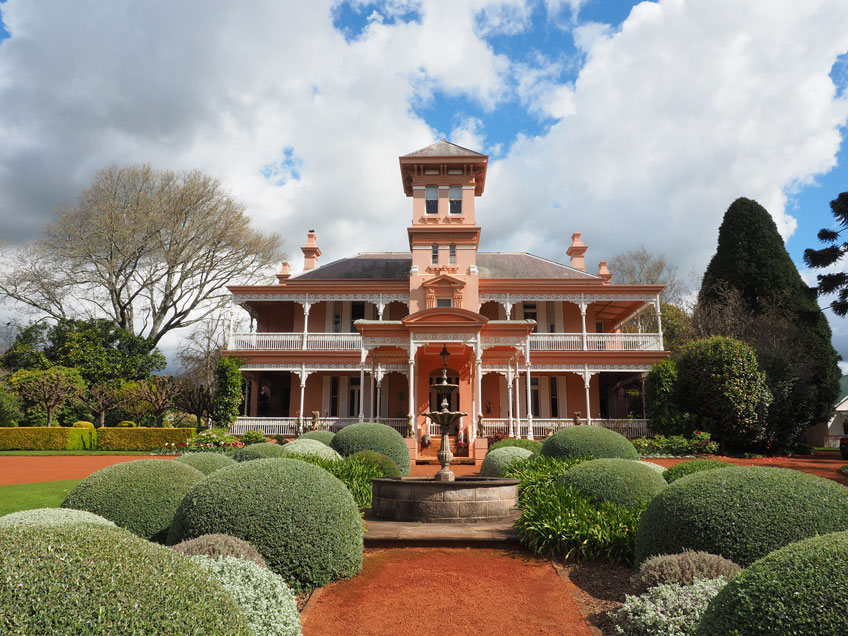
Retford Park. Photo - Robin Powell
Built in 1887 by Samuel Hordern, the founder of the great shopping emporium Anthony Horden & Sons, the house was settled into a fine garden and park
of mature trees when James Fairfax bought it in 1964. He went on to improve the garden over the six decades he lived at Retford Park, before he presented
the property to the National Trust, as a treasure we can all enjoy.
Rick Shepherd has been the head gardener at Retford for seven years now. “I’ve always said that if you find a job that you love you never have to go to
work, and I love it here, “ he says. “I love the heritage of the place, its lovely mature trees, even the patina of the old brick drains! James Fairfax
also gave me the autonomy to pursue my own vision for the garden, which I really valued.”
Rick is at Retford four days a week, heading a team of one full and one part-time gardener, along with a group of enthusiastic volunteers who work in the
garden once a week. If you’re keen to join them call 02 4861 1933.
We’re attending to lawns
The lawns at Retford Park set off the house, gardens and the important sculptures, like this one by Inge King, called ‘Euphoric Angels’. It sits in a garden
room of its own on a plinth of clipped teucrium, hedged by cypress walls. The lawn is part of the frame of the art work. In spring we pay close attention
to this and all the lawns on the property, fertilising with blood and bone and spraying with seaweed tonic. Worn areas are top-dressed and re-sown
where required. We set the mower to a mulch-mower setting, which cuts the grass blades into super-fine shreds that fall back into the lawn, so that
all the nutrient-rich new growth is returned and levels of organic matter in the soil are increased.
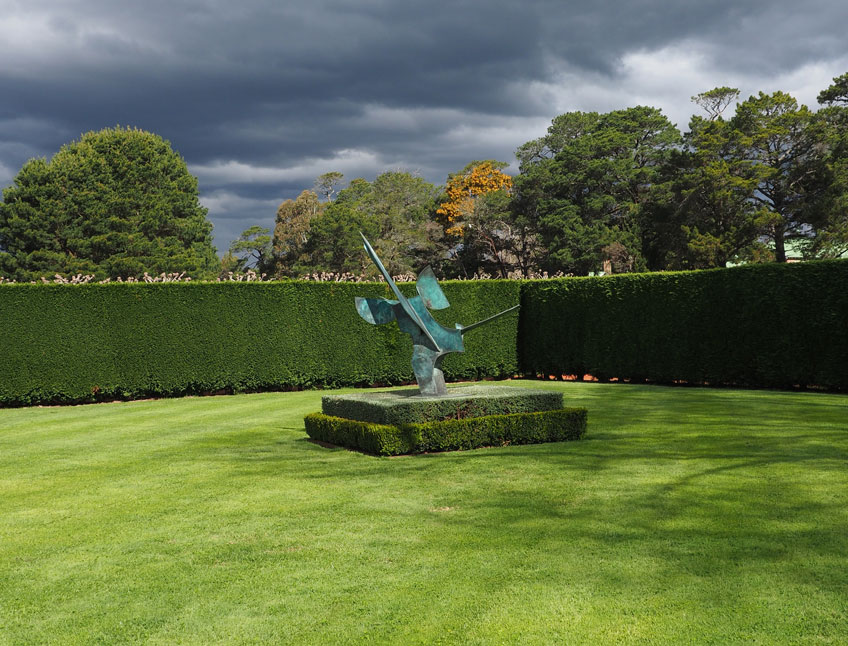
Luscious lawns at Redford. Photo - Robin Powell
We’re loving the peonies
James Fairfax was a great fan of Japanese art and culture. He lived in Japan for a time when he was a young man, and collected screens and kimono that
were displayed in the house and are now in held in museum collections. Peonies often feature in Japanese artworks and David Wilkinson, a Melbourne-based
architect who worked with James Fairfax on quite a few areas of the garden over several decades, designed this peony walk to feature the flower, and
we’ve just added a path that links it to another walk. The peonies here are different varieties so that the flowering extends from August to October.
We use Melbourne Cup Day as a reminder for fertilising them and dig in a mixture of blood and bone, chicken manure pellets and dolomite (for calcium
and magnesium). We mulch the peony beds before the hot weather starts and take care not to over water.
_web.jpg)
Peonies. Photo - Robin Powell
We’re preparing the Persian Carpet
James Fairfax wasn’t a tennis player so he converted the existing tennis court to what we now call the Laurel Lawn. On the north side of the lawn is a
perennial border known as the Persian Carpet due to its palette of mainly red flowers. When I first started working here someone told me that James
Fairfax loved red flowers, and though he never told me that himself, I love red flowers too, and I’ve used that as a starting point for flower choices
in the garden. I think red looks really good in this garden, and I steer away from yellow, which doesn’t! In early spring when the danger of heavy
frost is over, the Persian Carpet border is cut back to the ground. After being chopped up with the lawnmower and mixed with lawn clippings and some
of the horse manure that our neighbor brings over for us, all this material goes to the compost heap. This is also the time to tweak the plantings
in the border. This year I am planting some lovely red-foliaged sedums, Sedum telephium ‘Desert Black’, and and a tall red salvia, Salvia monarda.
When everything is settled, the bed is spread with compost and mulched with chopped oak leaves that we collected in the autumn.
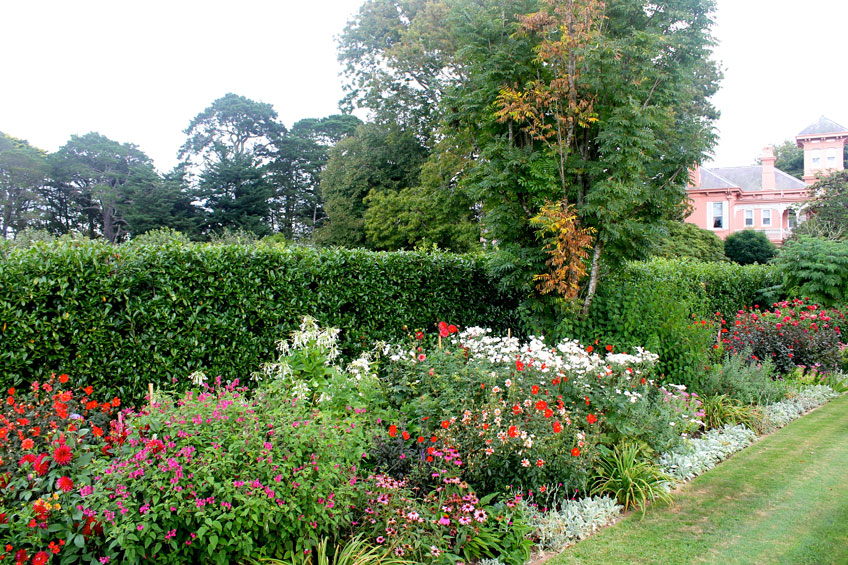
The perennial border known as 'The Persian Carpet'. Photo - Robin Powell
It’s time to
Cherry slug can skeletonise the leaves of the quinces, apples, plums and cherries in the orchard. Our local wood-fired pizza restaurant supplies us with
wood ash, which we spread on the affected foliage. This dessicates the ‘slugs’, which are actually the larvae of a type of sawfly.
Check the pH of the soil where our rhododendrons and azaleas grow in spring. If it is too alkaline, we add elemental sulphur, along with a dressing of
our estate-made compost, then water deeply to set them up for the warmer weather.
Fertilise the orchard with chicken manure pellets and our own compost, then mulch with nitrogen-rich lucerne hay - we buy spoiled bales cheaply from the
local co-op.
Cut back frost-damaged, tender-foliaged plants, including arthropodiums and cannas, once the danger of frost has passed. Frost-damaged foliage protects
what’s underneath so it’s important not to do this too early.
Prepare pots for front of the house. We have mostly ‘Big Red’ and some ‘Big Pink’ geraniums in pots during the warm weather.
We’re releasing the bugs
Retford Park has a very impressive rhododendron collection and they look fabulous in the spring, peaking in early October. As the weather warms up two
spotted mite can be a problem. They live on the undersides of the leaves, sucking out nutrients and giving foliage a silvery look. We control this
pest with a predatory mite called Neoseiulus californicus. The mites come in packs of 1,000 from a company called Bugs for Bugs. They are sprinkled
over the affected plants, on a day when rain is not forecast and we’re not planning to water. We also release ladybirds (Harmonia conformis) that feast
on the aphids that affect some of our azaleas.
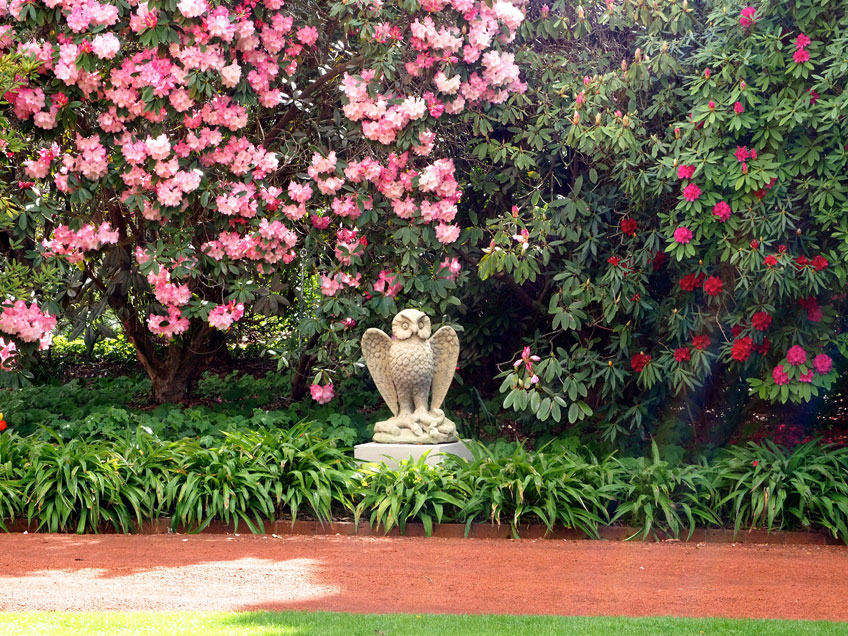
Part of the Rhododendron collection. Photo - Robin Powell
Retford Park is open on the first weekend of the month through spring, 10am - 4pm, $15 entry. 1325 Old South Road, Bowral.
Six plants for spring
Poppies
We use the tall red, double peony poppies in the Persian Carpet border, which look stunning.
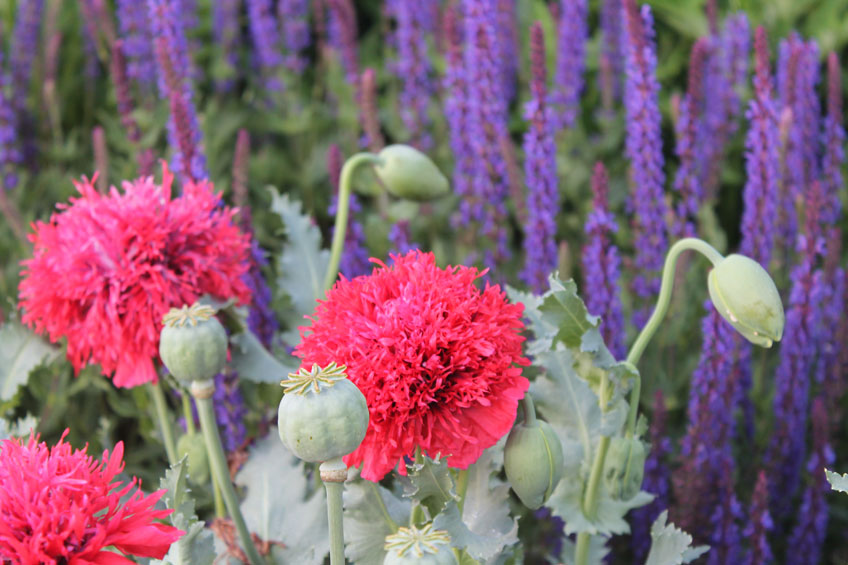
Poppies
Artichokes
We grow these for their good looks, rather than to harvest for dinner. The silver foliage looks great in the Persian Carpet border, and spring buds are
a bonus.
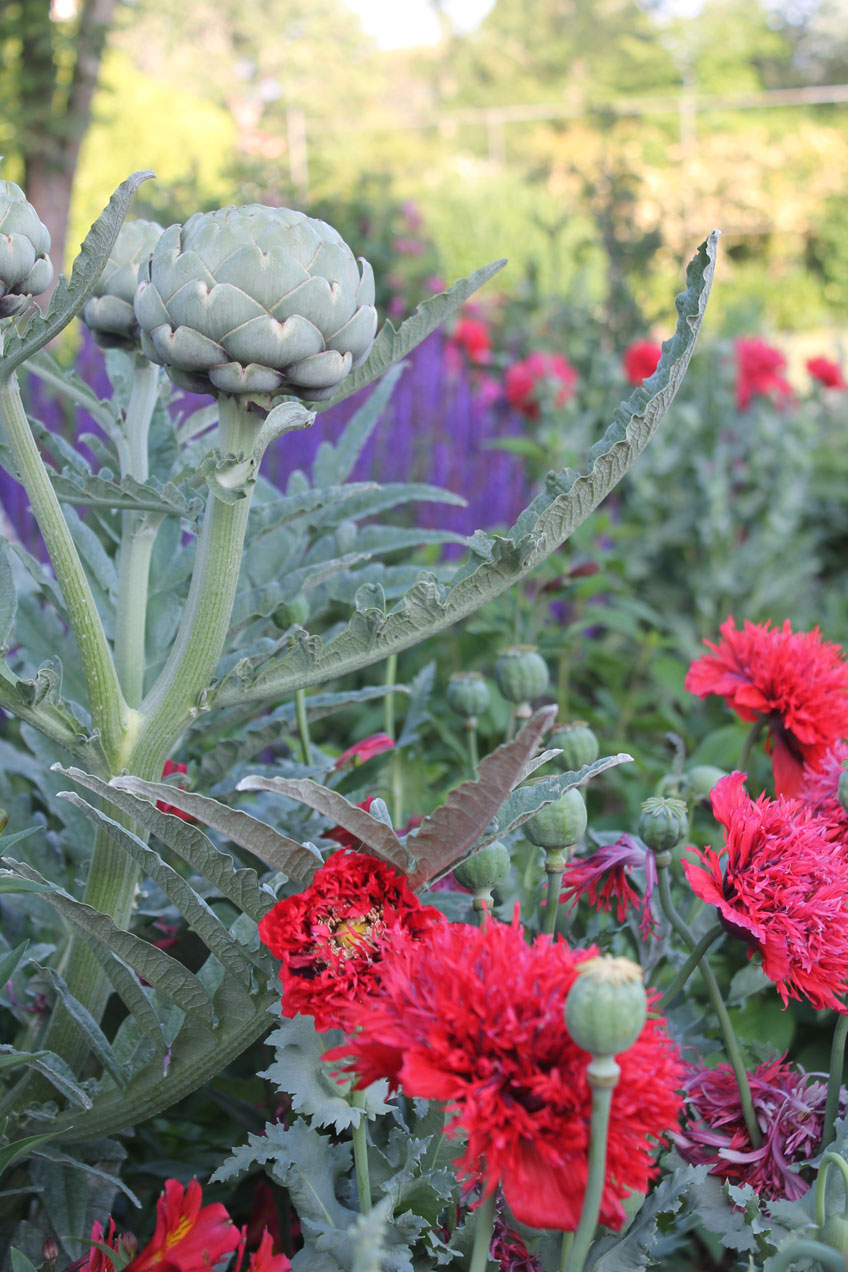
Artichoke
Lychnis
I rescued this as a lawn weed and planted into the border where its lovely grey foliage and cerise flower is perfect.
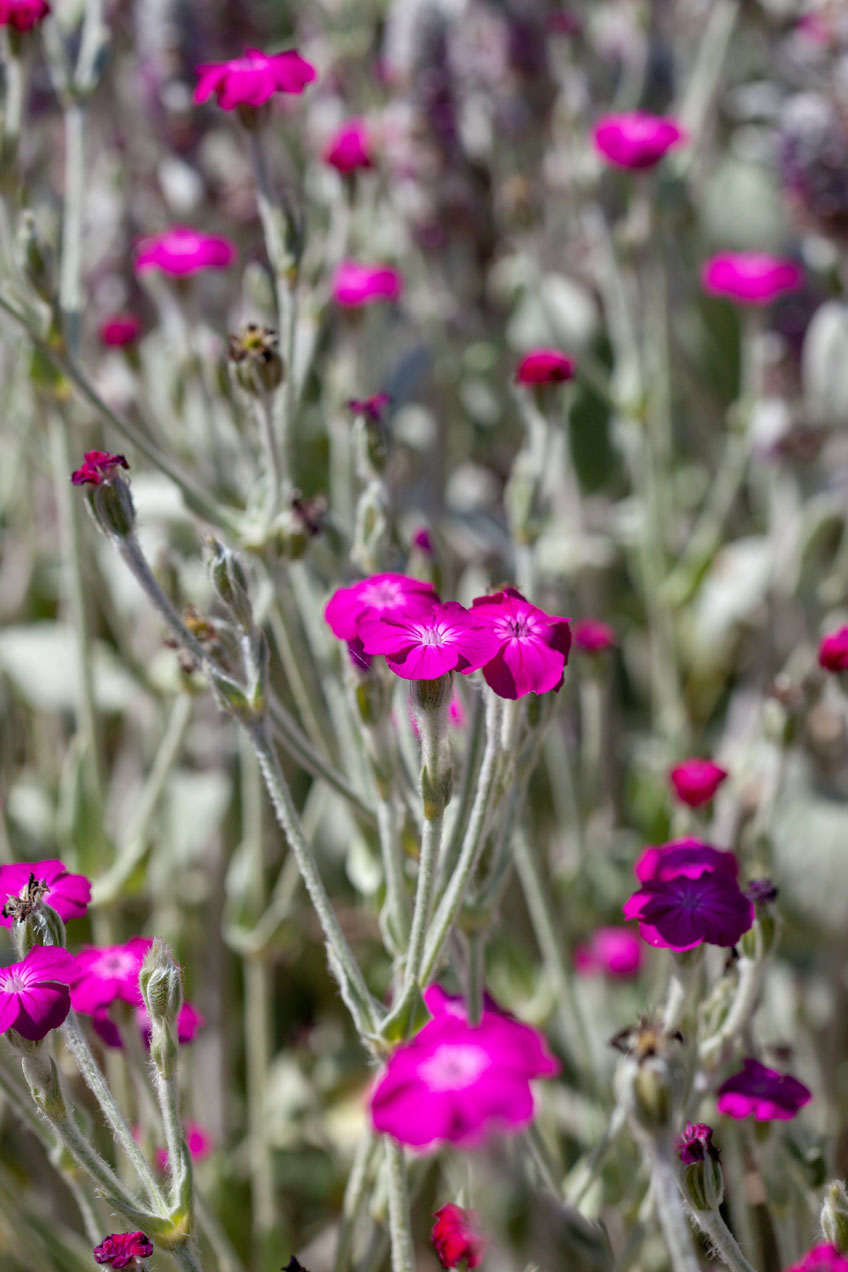
Lychnis
Wisteria
We have two old twisted wisterias - a white and a purple - twining around a solid wooden pergola. The purple flowers first, followed by the white.
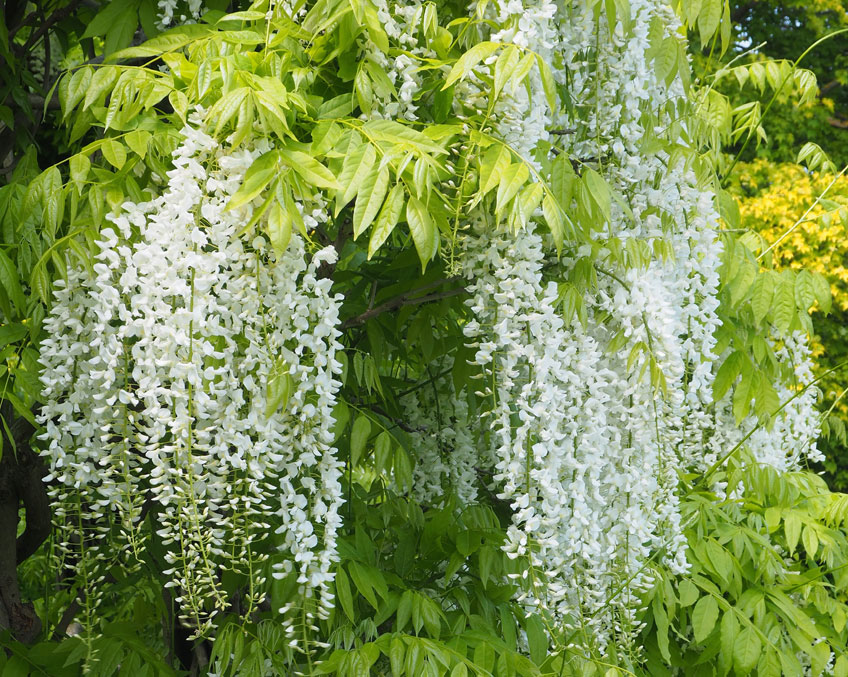
White wisteria
Dogwood
Cornus kousa is the white deciduous dogwood, which puts on a great, long-lasting show near the bunya pine over spring.
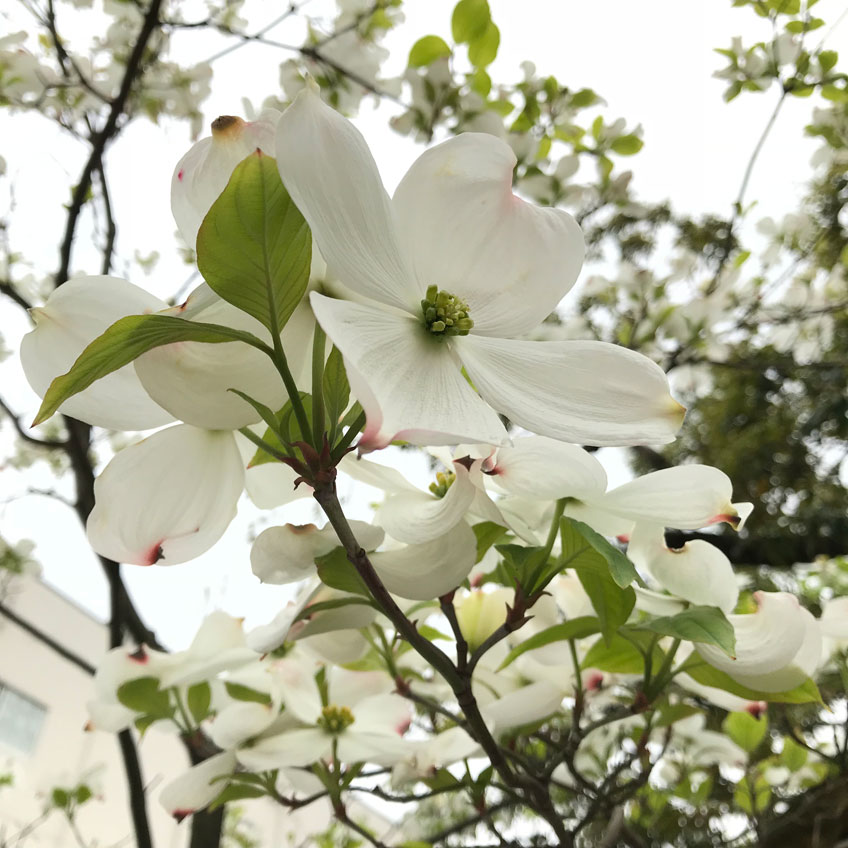
Dogwood
Arums
The arum lilies are sensational in October, and just as good as a cut flower as they are in the garden. We have white ones, and the lovely ‘Green Goddess’.
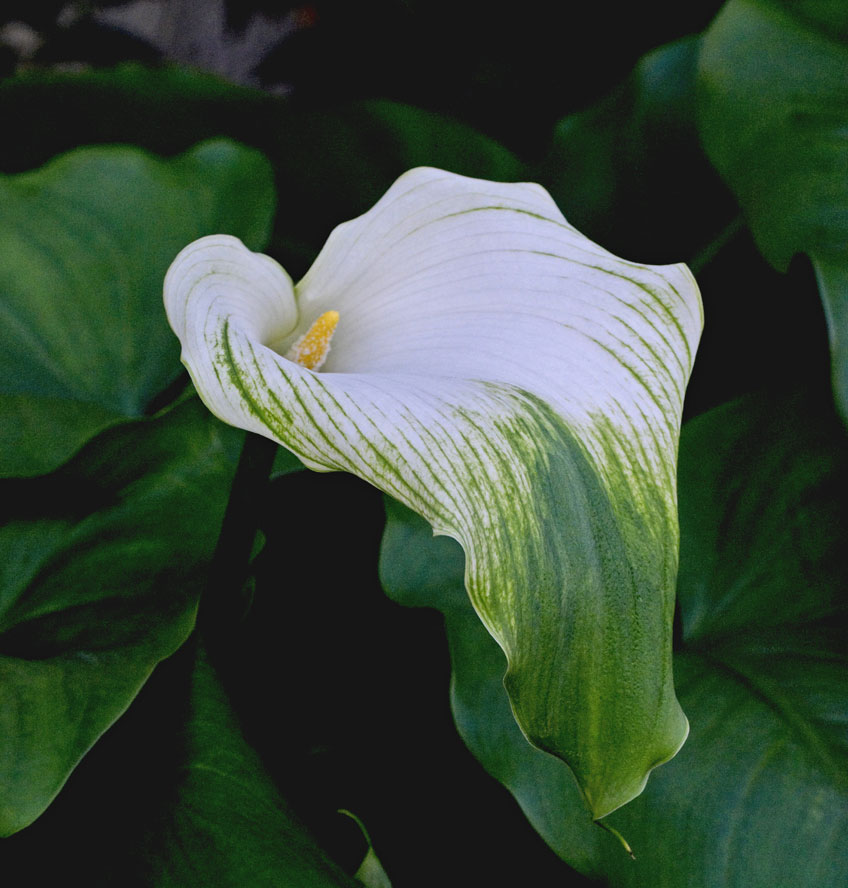
Arums